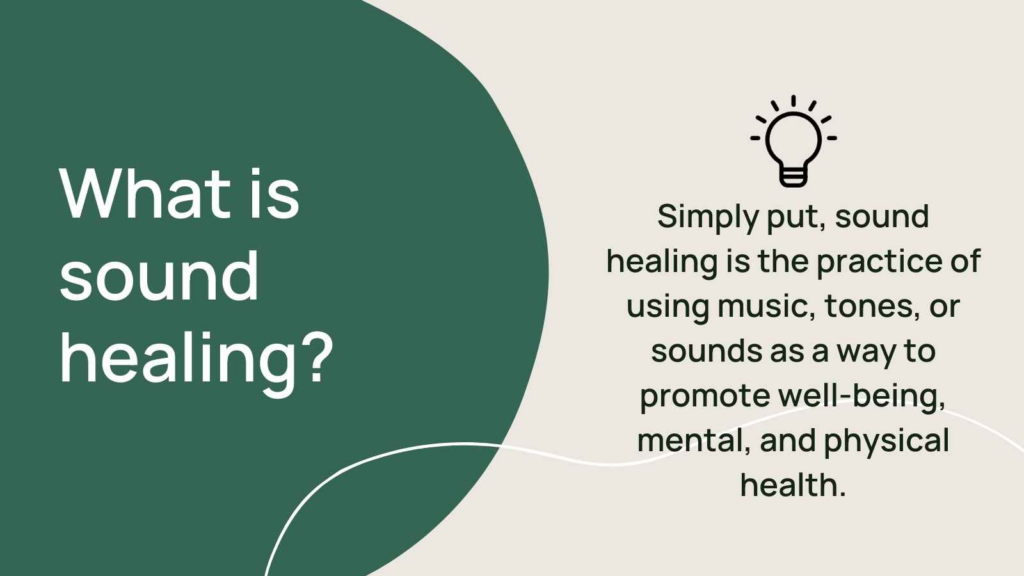
The past few years have seen a significant increase in sound being used to promote health and well-being. In that context, the two most common terms are sound healing and sound therapy. While the practices have some similarities, they differ in their characteristics and uses.
How To Merge Sound Therapy and Sound Healing?
The ancient philosophy of sound healing and modern technique of sound therapy can be merged through vibrations generated by different instruments or voices in order to improve body wellness and emotional wellbeing.
Most often, sound healing has a holistic approach where it covers different aspects such as physical, emotional and spiritual wellness.Practitioners can choose from many instruments like singing bowls, gongs, tuning forks, drums and didgeridoos among others.
Many practitioners are convinced that what comes first is intention and energy. They believe that therapists’ state of mind affects the form of therapy being applied.
What are the Common Techniques in Sound Healing?
The common techniques in sound healing include Sound Baths, Toning and Chanting and Binaural Beats. They form the base of sound healing.
In sound baths, participants lie down while the professional plays various instruments creating an immersive sonic experience. Toning and Chanting This refers to using one’s voice to produce certain frequencies believed to possess curative powers. Binaural Beats uses two slightly dissimilar frequencies are played in each ear so as to form a perceptive third tone.
What Are The Key Characteristics of Sound Therapy?
Key characteristics of sound therapy include an evidence-based approach, targeted interventions, standardized protocols, and personal certification.
The practice of sound therapy relies more on scientific research and clinical studies. In a bid to address specific problems like tinnitus or hearing loss, therapists often employ particular sound patterns or frequencies.
In comparison to the intuitive nature of sound healing, this kind of treatment usually involves more standardized protocols and techniques. Typically trained through formal means, sound therapists can hold certifications in their field.
What Common Techniques Are Used in Sound Therapy?

The common techniques of sound therapy include Auditory Integration Training, Tinnitus Retraining Therapy, Guided Imagery with Music, and Vibroacoustic Therapy.
Tinnitus Retraining Therapy is a particular protocol employed for treating symptoms of tinnitus. Guided Imagery with Music combines music listening with visualization techniques for healing purposes.
Vibroacoustic Therapy uses low-frequency vibrations that are passed directly into the body via speakers.
Can One Compare Between Sound Healing and Sound Therapy?
The comparison between sound healing and sound therapies lies in their treatment approaches and scientific basis of practice.
Sound healing aims at promoting overall well-being through a holistic approach that is more often spiritual. Sound therapy focuses on dealing with specific health issues or symptoms using clinical techniques.
In sound healing, studies can attest to specific aspects of sound healing, many of its principles are based on traditional or other non-mainstream therapies. Sound therapy relies on extensive scientific research, with numerous clinical studies demonstrating effectiveness for particular conditions.
Can They Be Integrated into mainstream medicine?
Yes, both healing methods can be seamlessly integrated into conventional medicine for better outcomes.
Sound Healing is often used as a complementary or alternative treatment method with limited integration into conventional healthcare practices. Sound Therapy tends to be used in conventional medical settings such as hospital environments and rehabilitation centers r.
Are Sound Therapy and Sound Healing Mutually Exclusive?

No sound therapy and sound healing are not mutually exclusive. In fact, many practitioners include elements of both approaches in their practice, acknowledging the relevance of wisdom.
For instance, when working with a client who has had surgery, a sound therapist could use specific frequencies to boost recovery and minimize pain (sound therapy) but may also incorporate a sound bath aimed at addressing the client’s general stress levels and emotional balance (sound healing).
What are the Future Trends in Sound-Based Well-Being?
The future of sound based treatment lies in continuous research into it. Even more blending of sound healing with principles from sound therapy can occur.
This would include advancements in technology, such as enhanced sound analysis tools or individualized forms of treatment, so as to close the gap between these mechanisms.
Additionally, there might be an increase in practices combining aspects of both sound therapy and sound healing as healthcare strives to become more holistic and integrated. Merging traditional wisdom with scientific research knowledge could result in novel ways that personalize interventions based on sound better effectiveness.
Conclusion
On one hand, sound therapy and sound healing are two different things but yet they have a common purpose which is to use the power of sound for improving health and well-being.
Like other treatment methods, one should think critically when opting for sound-based therapies in relation to their health. In this case, consultation with health care practitioners is crucial especially when dealing with specific ailments.
